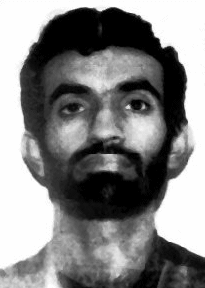After the 9/11 attacks, U.S. officials decided to invade Afghanistan.
Never mind that the federal government produced no evidence of complicity of the Taliban government in the attacks.
Never mind that there was no congressional declaration of war against Afghanistan, as the Constitution requires.
Never mind that Afghanistan had been legally justified in refusing President Bush’s unconditional extradition demand for Osama bin Laden to be turned over to the Pentagon and the CIA, given that there was no extradition treaty between Afghanistan and the United States.
Never mind all that. All that mattered, U.S. officials and interventionists claimed, was that the U.S. government had to display a “robust” response to the 9/11 attacks, which meant invading Afghanistan, wreaking massive amounts of death and destruction in that country, and then soon thereafter doing the same thing to the people of Iraq.
Was there another route to take?
Actually, there was. It was a route that would not have entailed killing hundreds of thousands of innocent people in Afghanistan and Iraq and destroying those two countries.
In 1993, a Pakistani man named Ramzi Yousef set off a bomb in the World Trade Center. Yousef intended to bring down the Twin Towers, which would have killed thousands, but he failed to do so. Nonetheless, the bombing killed six people and injured 1,042. Yousef escaped to Pakistan.
There is no difference in principle between that terrorist attack and the terrorist attack on the WTC eight years later. The only difference was that the second attack did bring down the towers, which killed more than 2,700 people.
Yet, back in 1993, interventionists were not calling for invading Pakistan or any other “robust” response to the bombing. And despite the fact that Yousef was in Pakistan, the U.S. government did not invade that country in an attempt to get him. Therefore, the Pakistani people were spared the massive death and destruction that were visited on the people of Afghanistan (and, later, the people of Iraq).
Instead, U.S. officials simply waited until Yousef surfaced. In fact, they waited two full years. In February 1995, they found Yousef in Pakistan and brought him back to the United States. They didn’t send him to Guantanamo for torture and indefinite incarceration without trial. Instead, they prosecuted and convicted him in federal district court. That’s because under U.S. law, terrorism is a federal criminal offense.
That was the right approach. That was the approach they could have and should have used with Osama bin Laden. The interventionists were right not to call for a “robust” response to Yousef’s bombing of the WTC in 1993. They were right not to call for a deadly and destructive invasion of Pakistan in an attempt to capture him and bring him to justice.
Also in 1993, a Pakistani man named Mir Amal Kansi shot and killed CIA employees who were driving to work at CIA headquarters in Virginia. Kansi, like Yousef, escaped back to Pakistan.
Once again, interventionists did not call for a “robust” response to the killings by advocating a deadly and destructive invasion of Pakistan. That’s also not the approach that U.S. officials took. Instead, as with Yousef, they simply waited Kansi out. In fact, while they had waited out Yousef for two years, it took them four years to get Kansi.
After they found and arrested Kansi in Pakistan in 1997, they brought him back to the United States and put him on trial for murder in a state court in Virginia rather than send him to Guantanamo Bay for torture and indefinite incarceration.
That was the right approach. Once again, unlike the people of Afghanistan (and Iraq), the people of Pakistan were spared a deadly and destructive invasion and occupation in an effort to get Kansi.
But there is another critical factor to consider in all this: the reason why Yousef and Kansi committed those terrorist attacks. Both of them made it very clear that they were retaliating for U.S. deadly interventionist policies in the Middle East, including the killings of thousands of Iraqi children from the deadly economic sanctions that U.S. officials had imposed on the people of Iraq in an effort to achieve regime change in that country.
Why is that important? Because that’s precisely the motive for all the other anti-U.S. terrorist attacks, including the attack on the USS Cole, the attacks on the U.S. embassies in East Africa, the 9/11 attacks, and the post-9/11 attacks (e.g., Fort Hood and Detroit).
Thus, what U.S. officials should have done after the 1993 attacks is simply cease and desist from any further interventionism in the Middle East, especially the use of economic sanctions that were being used to kill those Iraqi children as a way to achieve regime change. If U.S. officials had followed that course of action, there never would have been the 9/11 attacks.
But U.S. officials were not about to let terrorist attacks stop them from striving to achieve regime change in Iraq, no matter how many people, including Iraqi children, had to die in the process. Madeleine Albright, the U.S. ambassador to the UN, reflected the mindset of U.S. officials when she stated in 1996 that the deaths of half-a-million Iraqi children were “worth it.” The deadly sanctions went on for another 5 years after her statement.
After the 9/11 attacks, the U.S. should have treated Osama bin Laden like it treated Yousef and Kansi. Rather than invade Afghanistan and wreak massive death and destruction, it should have simply waited until bin Laden surfaced and then captured him and brought him to the United States for trial. Add, it should have immediately stopped its deadly and destructive interventionism in the Middle East, especially by lifting its economic sanctions that were killing those multitudes of children in Iraq.
Instead, unlike 1993, U.S. officials, with the full support of interventionists, unleashed the deadly and destructive invasion and occupation of Afghanistan (and, later, Iraq). Of course, killing more people over a 20-year period, ensured a constant stream of anger and a thirst for retaliation among people in the Middle East, which ended up making the “war on terrorism” a perpetual war. That has enabled the U.S. military-industrial complex and its army of “defense” contractors to continue feeding at the public trough on a never-ending, ever-increasing basis.




